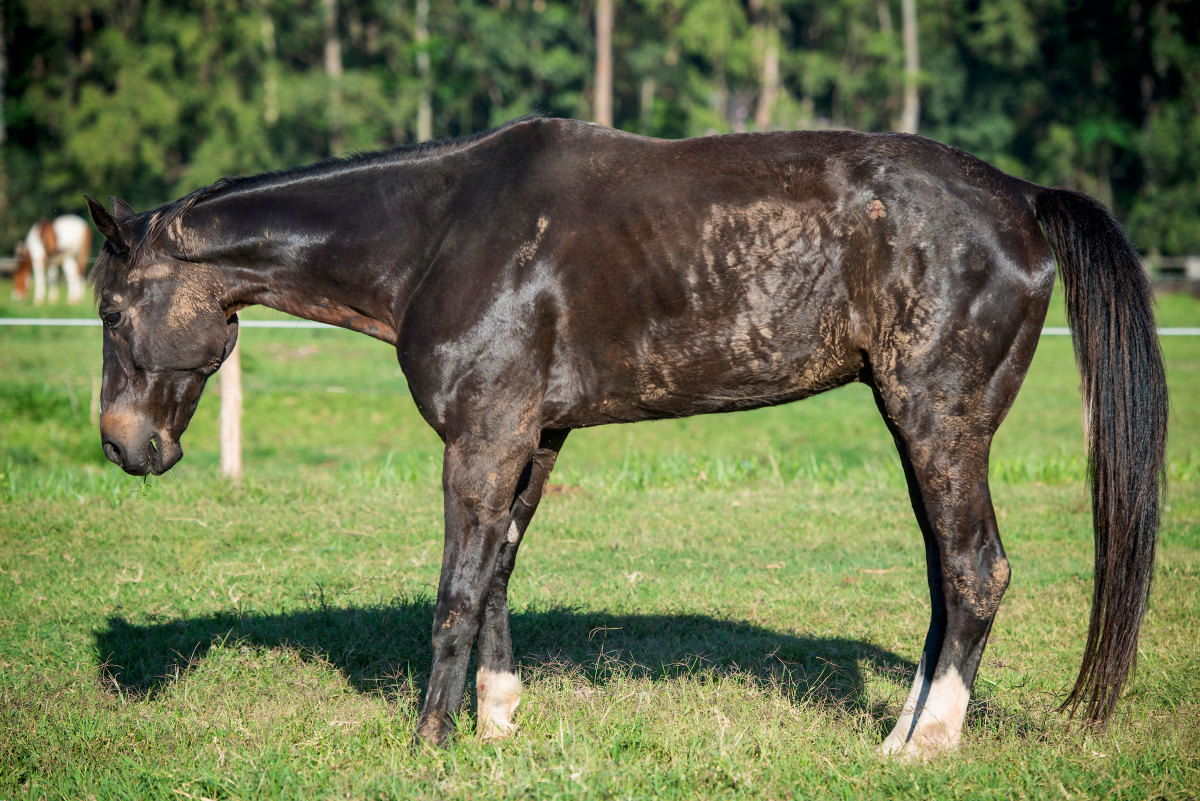
There are concerns that joint injections using corticosteroids, and in particular triamcinolone (TA), have the potential to elicit laminitis. A UK recent retrospective study looked at this possibility over an 11-year period (Jan 2007 – Dec 2017) in 1,510 horses [Haseler, C.J.; Jarvis, G.E.; McGovern, K.F. Intra-synovial triamcinolone treatment is not associated with incidence of acute laminitis. Equine Veterinary Journal Nov 2020; doi: 10.1111/EVJ.13361].
Each TA- treated horse was compared to an untreated horse that matched in age, sex, date of treatment, season, and client type as closely as possible. Two-thirds of the study population were Thoroughbred racehorses. All the horses were evaluated for laminitis over a 4-month period following treatment or as a control horse. Of the 1,510 horse, 966 total individuals completed the full assessment period.
The results of incidence of laminitis in 966 horses:
- Three horses (0.31%) in each group (TA-treated and control) developed laminitis
- Of the three TA-treated individuals, one received 5 mg TA into both for distal sesamoidean impar ligaments; one received 5 mg TA in a single metacarpophalangeal joint; and the third received treatment of the navicular bursa with no specified dose although the record noted billing on a single 10 mg ampule.
- Laminitis developed 21, 51 and 55 days following TA treatment. None of these three had a history of laminitis.
- Laminitis developed at 10, 29 and 111 days in the three untreated control matched horses. One of the three untreated controls had a previous history of laminitis.
- One TA-treated horse was tested and identified with mild insulin dysregulation four weeks following diagnosis of laminitis. One untreated horse was diagnosed with PPID six months following development of laminitis.
In summary, the authors state, “There was no increase in risk of laminitis following administration of intra-synovial triamcinolone.” The 0.31% incidence is comparable to findings of previous studies. Even in earlier studies, where doses of 40 – 80 mg TA were administered, incidence of laminitis occurred at 0.5%.
It is noteworthy that “the low incidence of laminitis may also reflect existing risk-based case selection.” Experienced practitioners tend not to prescribe corticosteroids to horses at risk of laminitis, such as those with PPID or EMS or in susceptible breeds.








